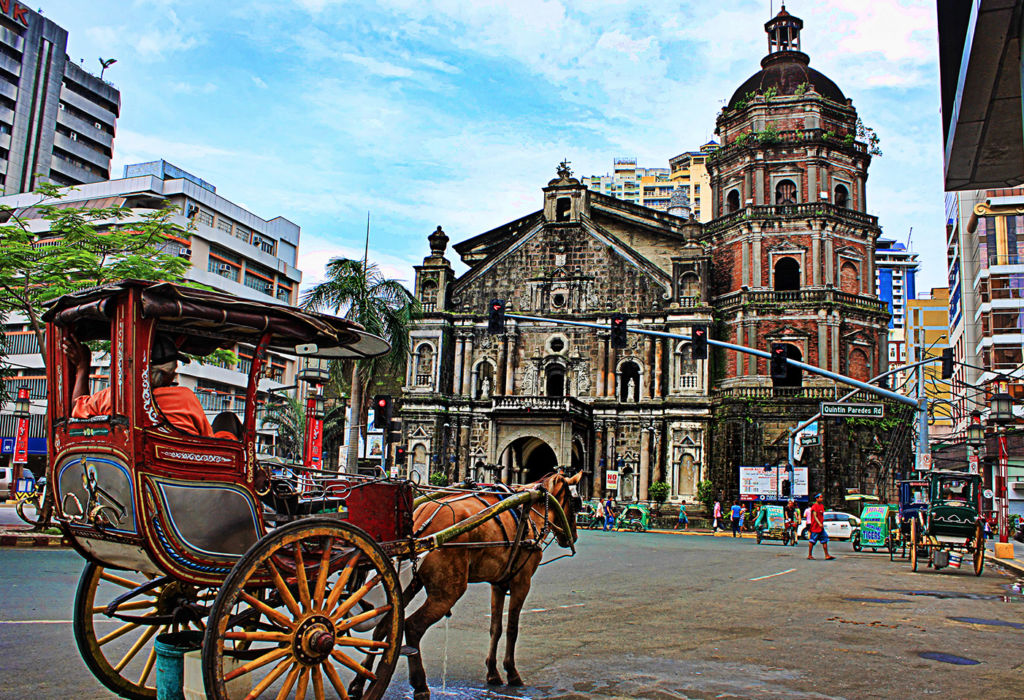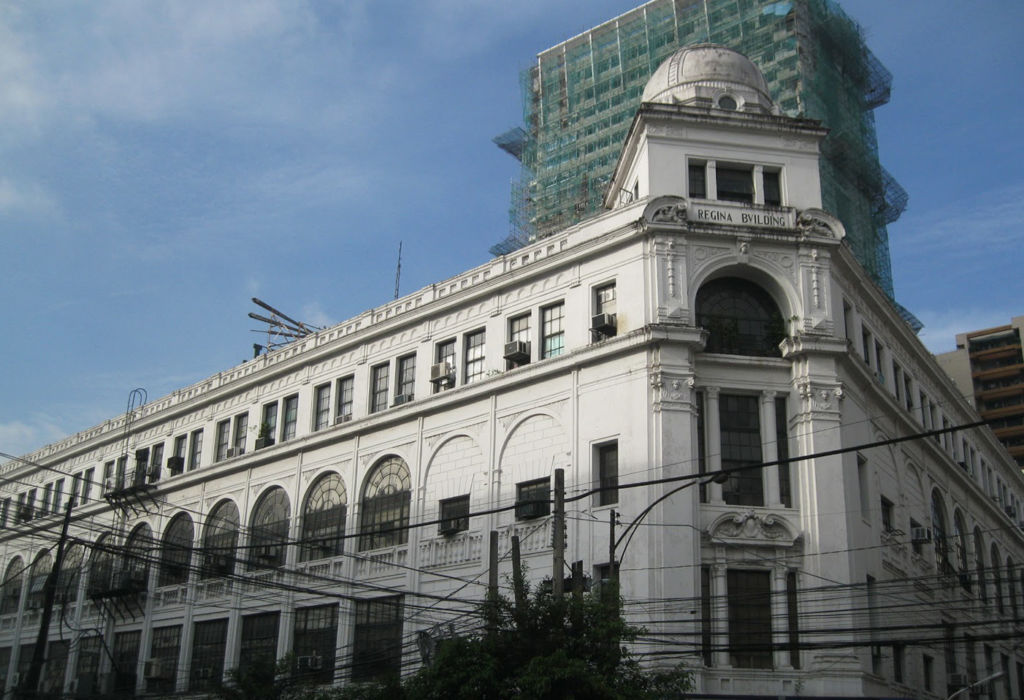Various groups have been actively engaged in efforts to revive the good old Manila and one of their main focus is the world’s oldest Chinatown – our very own Binondo.
While most Metro Manila residents would visit this crowded, traffic congested and parking space-deprived Chinese territory for gastronomic treats and hard-to-refuse-bargains, there is actually more to this place than just that. Not that I’m saying food and shopping are irrelevant to me but Binondo is far more interesting if you try to know it deeper.
Established in 1594, the area served as the cradle of the first Chinese groups in Manila and was later declared the centre of commerce. The piece of land was given to some Chinese merchants in perpetuity and limited civil liberties. Binondo is right across Pasig River from Intramuros, then called The Walled City, where most of the Spanish colonisers were based this is so they can easily monitor the immigrants.
Some main roads in the area are named after prominent personalities in history like the famed Ongpin Road where you can haggle for the best prices of gold accessories, traditional supplements and medicines, and basically everything Chinese! Roman Ongpin was a wealthy businessman who once held the title Teniente de Mestizos de Binondo or a lieutenant in charge of the Chinoys of Binondo. He provided financial support to the katipuneros for the purchase of guns, ammunitions, and other supplies. There’s also Benavides Street named after Archbishop Miguel de Benavides, the third Archbishop of Manila and founder of University of Santo Tomas.
 Binondo Church – photo by Wikimedia
Binondo Church – photo by Wikimedia
Three ways to enjoy this place of historical and cultural significance: take a heritage tour along the buildings of Escolta Street, indulge in authentic Chinese cooking, and lastly, get the best shopping deals from local stores and the weekend market!
10:00am
Visit the heritage buildings. Transit MNL once organised an open studio cum heritage tour in Escolta to, basically, marry three active factors in the present urban society which are people, heritage, and technology. One of the few heritage buildings featured then was the First United Building formerly known as Perez-Samanillo Building. It was completed in 1928 and was recognised as the tallest building in Manila at that time. It was also designed by Andres Luna de San Pedro, son of the celebrated painter, Juan Luna.
 First United Building – photo by Benjie Layug
First United Building – photo by Benjie Layug
Calvo Building, built in 1938, now houses the Escolta Museum. It is located at the corner of Escolta and Soda Streets. The building was designed by Architect Fernando Hizon Ocampo who was also the man behind other famous landmarks in Manila like the Manila Cathedral and UST Central Seminary.
 Calvo Building – photo by Ronnie Bernardo
Calvo Building – photo by Ronnie Bernardo
Originally known as Roxas Building, Regina Building changed its name in 1926 when the previous owners sold it to the De Leon family. It used to be a three-storey structure until the new owners expanded it to four with Architect Andres Luna de San Pedro. A lot of big insurance companies during that time held office here including Madrigal Steamship of the former senator, Vicente Madrigal.
 Regina Building – photo by Shaharaine Abdullah
Regina Building – photo by Shaharaine Abdullah
12:00pm
Re-discover authentic Chinese cooking. You know you’re already in Binondo when you enter one of the few arches ornamented with Chinese symbols and imagery. It feels like entering a whole new dimension, far from the ones you are accustomed to when you speak of Manila. You can also smell the distinct aroma of Chinese sauces and condiments all over the place. Duck, pork, and chicken meat hanging from one restaurant window to another ready to be chopped, seasoned and cooked however the customers desire. My current obsession is Ying Ying Tea House’s Pork Chop and Yang Chow Fried Rice. And this, I must tell you, not all pork chops and yang chows are created equal. Ying Ying’s pork chop has a perfectly salty aftertaste with tender meat. The Yang Chow is complete with a generous amount of shrimps and veggies. They are located along Dasmarinas corner Yuchengco streets.
Wai Ying is also drawing a crowd to Binondo. They can be found on Benavides Street and are famous for their Peking Duck Rice. Their noodle soups are also a perfect match for their dumplings.
Then there is, of course, the classic, Wan Chai. They claim they have the best siumai in the whole of Binondo and I just couldn’t agree more! They always serve it steaming hot, tender, and complete with condiments! You should also try their hakaw, shark’s fin, sweet and sour pork, pancit canton, beef ho-fan, and basically anything you can eat from their menu!
 Wan Chai Tea House – photo by Webbline
Wan Chai Tea House – photo by Webbline
3:00pm
Time to go to the weekend market. The First United Building along Escolta also serves as the venue for Saturday Future Market which features unique finds like old Manila memorabilia, edgy fashion accessories, artisanal cooking, and lovely art pieces. The expo is being mounted by 98B collaboratory in partnership with First United Building and Escota Commercial Association. When shopping, try to also engage in a conversation with the artists and merchants manning the shops. You might be in for an interesting weekend chat with a stranger as they try to share their stories of passion for their craft. I was able to score a pretty red leather purse from Busy Cocoon during their first time showcasing their products on the said market.
 Saturday Future Market in Escolta – photo by Manillenials
Saturday Future Market in Escolta – photo by Manillenials
 Saturday Future Market in Escolta – photo by Lilafair
Saturday Future Market in Escolta – photo by Lilafair
6:00pm
End your day with a tour of the infamous Binondo Church or Minor Basilica of Saint Lorenzo Ruiz and Our Lady of the Most Holy Rosary Parish which is conveniently located at the heart of Binondo fronting Plaza San Lorenzo Ruiz. The church served the Chinese converts during the Spanish regime and was established by Dominican priests in 1596. It was damaged heavily by numerous wars and natural calamities and only its bell tower remains to be the original 16th-century structure. The altar resembles St. Peter’s Basilica in the Vatican and the entirety of the church gleams impeccably at night which could make your whole day trek all worth it.
Pop culture connoisseur, minimalist, and a picky eater, he brainstorms with himself on Sunday nights obsessing about his existential dilemmas then regrets all of it the following day. He is finally done ghostwriting for other people and now decided to have a byline of his own.







